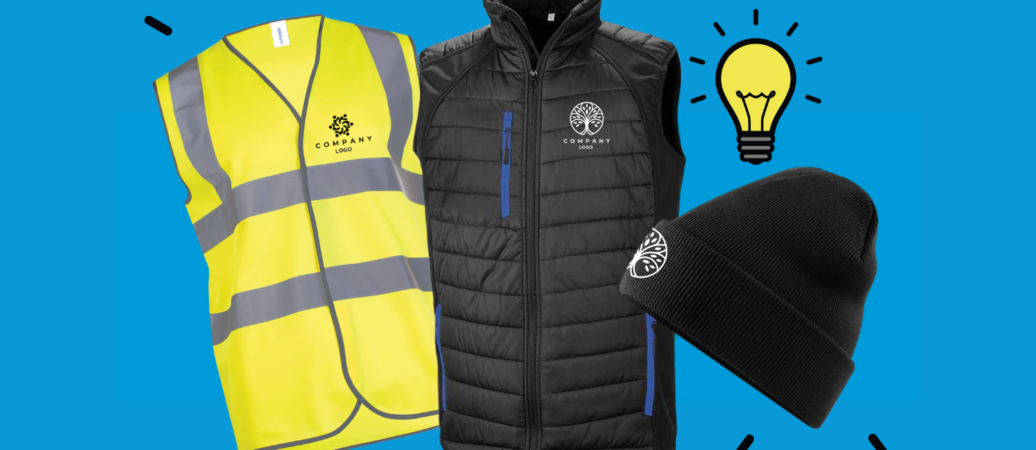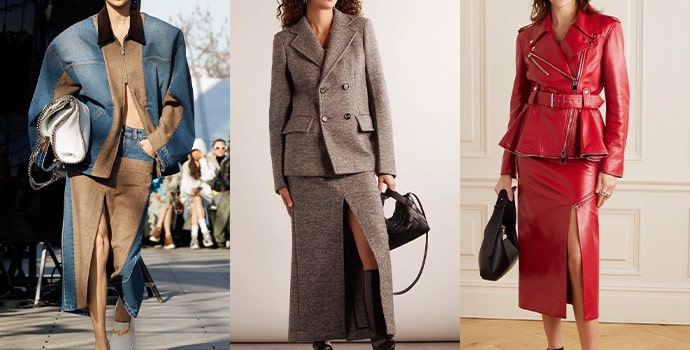How Branded Clothing Combines Fit, Function, and Fabric Innovation
How Branded Clothing Combines Fit, Function, and Fabric Innovation
Blog Article
Understanding Garments: The Significance of Fabric Choices in Your Closet
The choice of material in apparel plays a crucial role in both visual appeals and functionality. Different products supply varying levels of comfort, breathability, and longevity, directly affecting the wearer's experience. Comprehending these nuances can improve one's closet markedly. Numerous neglect how these choices can impact not just personal style, however also sustainability. What material decisions could redefine your wardrobe and straighten it with both style and duty?
The Duty of Material in vogue and Capability

Usual Textile Kinds and Their Attributes
When selecting clothes, recognizing the qualities of typical textile kinds is essential for making notified selections. Cotton, a widely-used all-natural fiber, is recognized for its breathability, versatility, and soft qualities, making it ideal for sportswear and day-to-day garments. Bed linen, an additional natural option, flaunts superb moisture-wicking properties and a distinct structure, ideal for cozy climates.Wool, usually preferred for its heat and resilience, varies in fineness; merino woollen is soft against the skin, while coarser types are utilized for outerwear. Artificial materials like polyester and nylon offer longevity and resistance to creases, making them prominent for activewear and traveling garments. Blends, which combine natural and artificial fibers, can enhance performance while maintaining comfort. By recognizing these textile features, people can select garments that straightens with their way of living and aesthetic choices.
Breathability and Convenience: Choosing the Right Fabrics for Various Environments
Selecting the ideal materials for different climates can greatly improve convenience and general wearability. Breathable materials are necessary in warm climates, as they enable air blood circulation and wetness dissipation. Fabrics such as cotton, bed linen, and moisture-wicking synthetics efficiently attract sweat away from the body, maintaining the wearer cool and completely dry. Alternatively, in chillier environments, thicker fabrics like wool or fleece supply insulation while maintaining breathability, making certain warmth without overheating.Additionally, the option of material weight plays a vital role; lightweight textiles are better for summer season, whereas heavier options are suited for wintertime wear. Recognizing the special residential or commercial properties of each fabric enables individuals to clothe properly for varying climate condition. Inevitably, choosing breathable and comfortable fabrics customized to certain environments can greatly boost everyday convenience and boost the overall experience of putting on garments.
Resilience and Treatment: How Material Influences Long Life of Your Wardrobe
Choosing the best materials can substantially affect the longevity and care needs of a closet. Fabrics such as cotton and polyester are recognized for their strength and convenience of upkeep, making them ideal for day-to-day wear. On the other hand, delicate products like silk and lace require even more mindful handling and specialized cleaning approaches, which can increase the time and effort needed for care. Branded Clothing.Durability is additionally influenced by the textile's weave and coating; snugly woven materials tend to stand up to deterioration better than loosely woven alternatives. Furthermore, artificial blends typically supply improved longevity, incorporating the finest high qualities of multiple fibers.Understanding the treatment directions for each and every material is essential, as inappropriate drying or washing can bring about premature wear. Inevitably, choosing long lasting materials can lead to a longer-lasting closet, minimizing the frequency of substitutes and adding to a more lasting fashion selection
The Influence of Fabric on Fit and Shape

Lasting Fabric Options: Making Eco-Friendly Decisions
The influence of material extends beyond fit and silhouette to incorporate ecological aspects, motivating an expanding rate of interest in sustainable textile options. Green textiles, such as natural cotton, hemp, and Tencel, are getting traction amongst consumers that prioritize sustainability in their closets. These materials are often generated with fewer chemicals and water, minimizing their environmental footprint.Additionally, recycled materials, made from post-consumer waste, provide an innovative remedy to the textile sector's pollution trouble. Brands progressively embrace transparency in their sourcing methods, allowing customers to make educated decisions concerning their purchases.Choosing check that lasting fabrics not only supports honest methods but likewise urges the garment industry to adopt even more accountable production approaches. As recognition of environmental concerns rises, people are urged to review the long-lasting influence of their fabric selections, promoting an activity towards a much more ecologically conscious and sustainable technique to style.
Elevating Style: Exactly How Textile Can Transform an Attire
While several may concentrate on shade and cut when selecting an attire, the choice of material plays an important role in raising design and boosting total look. Various materials share unique moods and messages; for instance, silk shows deluxe and sophistication, while denim provides an informal, unwinded vibe. The texture and drape of a fabric can dramatically alter the shape, with structured textiles offering a sleek appearance and softer ones producing a much more fluid, kicked back aesthetic.Moreover, the weight of the material affects wearability across periods. Lightweight fabrics like linen and cotton are optimal for summertime, while heavier materials such as woollen and velour provide warmth and elegance in cooler months. Understanding material buildings, such as breathability and stretch, additionally encourages individuals to make educated choices that enhance convenience without jeopardizing style. Ultimately, the right textile can change an outfit from regular to amazing, making it an essential consideration in any kind of wardrobe.
Frequently Asked Questions
How Do I Determine the Textile Web Content of My Garments?
To identify fabric web content, one can check out treatment tags, conduct burn examinations for fiber recognition, or get in touch with anonymous material swatches. These approaches assist distinguish products, making sure informed options for clothing treatment and maintenance in everyday wear.
Can Textile Selection Affect My Mood or Confidence?
Fabric option can significantly impact a person's mood and confidence. Branded Clothing. Specific materials might evoke sensations of comfort or beauty, while others can feel restrictive or uncomplimentary, eventually affecting self-perception and psychological health throughout the day
What Fabrics Are Finest for Sensitive Skin?
For people with sensitive skin, natural textiles like cotton, bed linen, and bamboo are frequently advised. These materials are breathable, hypoallergenic, and less most likely to cause irritation, making them appropriate options for comfort and skin health and wellness.
Exactly how Do I Appropriately Laundry and Look After Various Fabrics?
To correctly wash and care for different fabrics, one should think about each material's certain demands, consisting of temperature level setups, detergents, and drying methods, guaranteeing longevity and preserving the textile's original qualities for suitable usage.
Are There Specific Fabrics for Athletic or Efficiency Wear?
Athletic or performance wear often makes use of look at more info fabrics such as polyester, spandex, and nylon. These products are designed for moisture-wicking, breathability, and flexibility, improving activity and comfort during physical activities while supplying sturdiness and support. On the other hand, in colder environments, thicker materials like wool or fleece offer insulation while preserving breathability, making certain heat without overheating.Additionally, the selection of fabric weight plays an important duty; lightweight fabrics are more suitable for summer season, whereas much heavier options are matched for winter months wear. In comparison, delicate materials like silk and lace call for more careful handling and specialized cleaning approaches, which can enhance the time and effort needed for care.Durability is also affected by the textile's weave and surface; firmly woven fabrics have a tendency to resist wear and tear better than loosely woven alternatives. In comparison, stiff materials can restrict activity but provide a classic, sleek look.Moreover, the thickness and appearance of the textile can affect the visual assumption of body form. The effect of fabric expands beyond fit and silhouette to incorporate environmental factors, prompting an expanding rate of interest in lasting textile choices. The structure and drape of a textile can significantly change the silhouette, with organized textiles offering a sleek appearance and softer ones creating an extra fluid, relaxed aesthetic.Moreover, the weight of the textile affects wearability across seasons.
Report this page